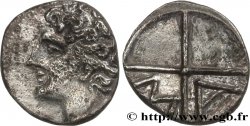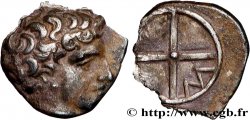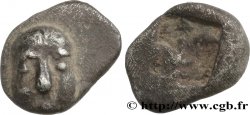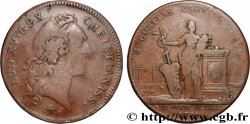Live auction - bga_529384 - MASSALIA - MARSEILLES Hémiobole du trésor d'Auriol à la tête de griffon et à la tête de lion à droite
得先注册又得到批准才可以报价。为了报价注册. 客户应该得到公司允许,那种过程需要 48 个小时。别等出售结束那一天才登记。您报价的话等于您赞成买那物品,而且按« 保价 » 证明您接受 cgb.fr 因特网拍卖使用法.
报价时只可以出全数值欧元总额。物品描述也说明销售结束时间,结束后出价都不会生效。 报价命令转达有时变动,等到最后秒钟增加否决的可能会。想多了解的话请注意 因特网拍卖常问
最高出价方将支付18%的不含税的拍卖费用
最高出价方将支付18%的不含税的拍卖费用
| 估算 : | 450 € |
| 价格 : | 没有出价 |
| 最高出价 : | 没有出价 |
| 拍卖结束日期 : | 09 April 2019 14:36:36 |
种类 Hémiobole du trésor d'Auriol à la tête de griffon et à la tête de lion à droite
日期: c. 480-470 AC.
铸币厂名称/城市 Marseille (13)
材质 silver
直径 7,5 mm
模子方针 3 h.
重量 0,60 g.
稀少度 R3
关于品相的说明
Agréable monnaie, avec une petite tête de frappe vigoureuse au droit et un revers un peu mou mais complet. Patine grise
出版目录中的项代码 :
正面
正面的文字 ANÉPIGRAPHE.
正面的说明书 Tête animale dégénérée et simplifiée à droite.
背面
背面的文字 ANÉPIGRAPHE.
背面的说明书 Tête de lion à droite dans un carré creux.
评论
Ce type de carré creux orné d'une tête de lion est typique du groupe FF "à la tête de griffon". Cet exemplaire semble avoir une tête de lion particulièrement stylisée au revers.
La plupart des monnaies de ce type ont une tête de lion à droite, mais quelques exemplaires sont connus avec la tête de lion à gauche ! Dans son article de 2008, J.-A. Chevillon mentionne le premier exemplaire publié en dans les années 1990 par A. Furtwängler, puis deux autres inédits. Les deux provenances connues sont de la région du Var et de Martigues, en plus de celui provenant d’une vente Jacquier.
This type of hollow square decorated with a lion's head is typical of the \\\"griffin-headed\\\" FF group. This example appears to have a particularly stylized lion's head on the reverse. Most coins of this type have a lion's head on the right, but a few examples are known with the lion's head on the left! In his 2008 article, J.-A. Chevillon mentions the first example published in the 1990s by A. Furtwängler, then two other unpublished ones. The two known provenances are from the Var and Martigues region, in addition to that coming from a Jackfruit sale.
La plupart des monnaies de ce type ont une tête de lion à droite, mais quelques exemplaires sont connus avec la tête de lion à gauche ! Dans son article de 2008, J.-A. Chevillon mentionne le premier exemplaire publié en dans les années 1990 par A. Furtwängler, puis deux autres inédits. Les deux provenances connues sont de la région du Var et de Martigues, en plus de celui provenant d’une vente Jacquier.
This type of hollow square decorated with a lion's head is typical of the \\\"griffin-headed\\\" FF group. This example appears to have a particularly stylized lion's head on the reverse. Most coins of this type have a lion's head on the right, but a few examples are known with the lion's head on the left! In his 2008 article, J.-A. Chevillon mentions the first example published in the 1990s by A. Furtwängler, then two other unpublished ones. The two known provenances are from the Var and Martigues region, in addition to that coming from a Jackfruit sale.







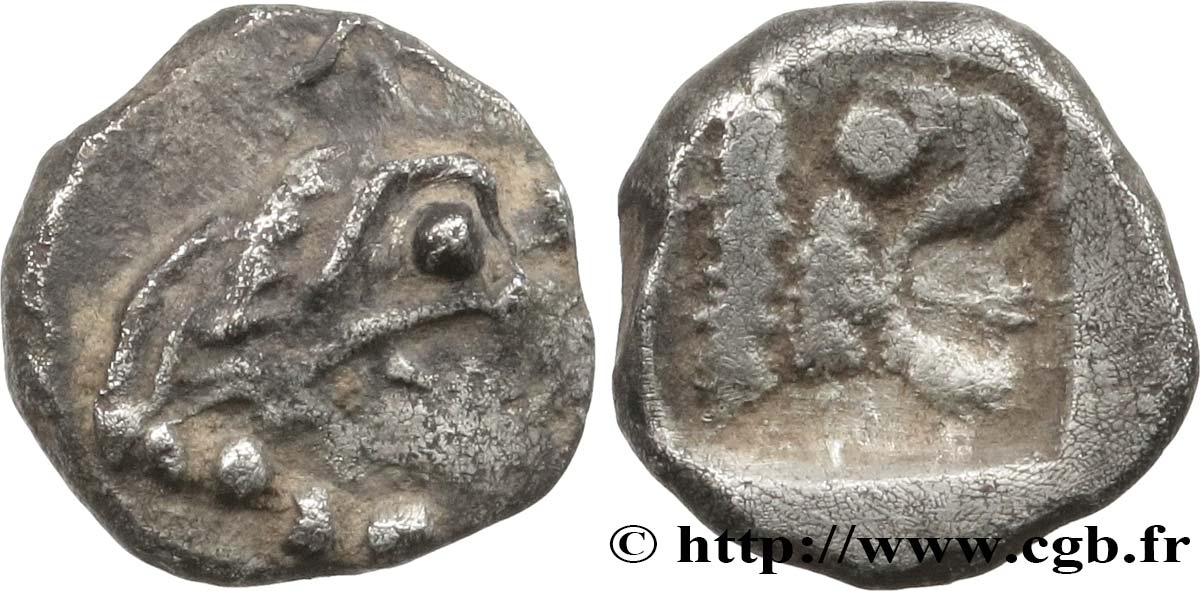
 对产品描述纠错
对产品描述纠错 打印
打印 分享我的选择
分享我的选择 提问
提问 Consign / sell
Consign / sell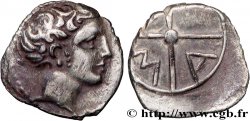
 产品介绍
产品介绍
